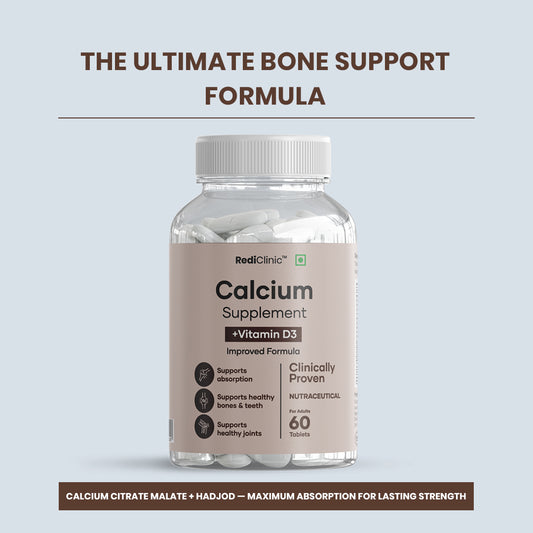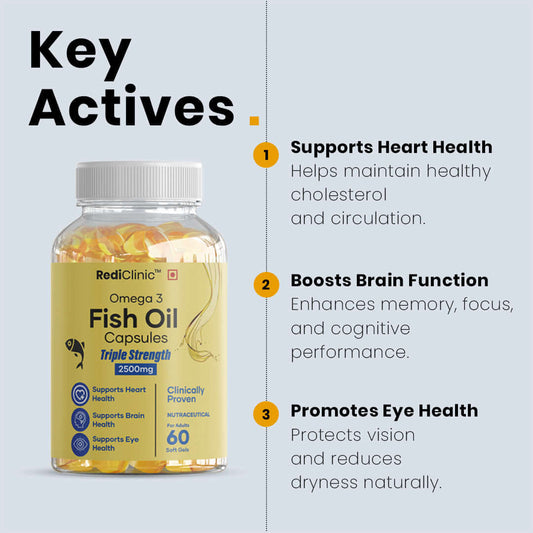Best Fiber-Rich Foods for Better Health: What You Need to Eat

Are you noticing dull skin or frequent breakouts? Could a fiber-rich diet enhance your skin's natural glow and smoothness? How does fiber aid digestion and weight loss? Let me share with you how this benefits your skin: It flushes out toxins, regulates blood sugar, and helps improve digestion-all factors that contribute to clearer, more radiant skin. With reduced inflammation and an enhanced gut, this could help lead to fewer breakouts and a brighter complexion. Today we will explain how fiber is key for our body.
Introduction to Fiber: How Does It Work?
Fiber is part of an Indian diet since it supports digestion, and keeps the person healthy by preventing obesity. It also aids in avoiding grave diseases, such as diabetes and heart disease. Therefore, whole plant foods are good for your health. The increase in fiber intake may improve digestion and reduce the risk of chronic diseases because of its effects on gut bacteria. Not all fibers are alike, though; some may have different health benefits.
What is dietary fiber?
Dietary fiber is composed of roughage or bulk from plant foods. Different from fats, proteins, and carbohydrates, most pass through the human digestive tract basically undigested or completely unchanged. There are two primary categories of fibers: one that dissolves in water and another which cannot.
The first type of fiber creates a gel-like strand that will dissolve in water, and it helps decrease the amount of cholesterol found in the blood, plus it will keep glucose at low levels as long as possible, but some of these products are a positive source of foods, such as oats and fruits and other types of beans. The other group is the negative one; the fiber cannot dissolve and will allow free passage through the digestive system, for example, full grain cereals and vegetables.
Benefits of fiber for digestive health
1. Supports Colon Health: Eating a diet rich in fiber lowers the risk of diversion proctitis and piles. It seems likely that eating a diet rich in fiber will lower the risk of rectal cancer. Research on the protective effect against diseases related to the colon, taking into account the fermentation of fiber within the colon, is still ongoing.
2. Blood Sugar Regulation: Consuming soluble fiber improves blood sugar control in diabetics by slowing the pace at which sugar enters the circulation. In an attempt to reduce the incidence of type 2 diabetes, even larger doses of insoluble fiber may be recommended.
3. Regulates Digestive system: Dietary fibers reduce the risk of diarrhea by making waste by increasing their volume and consistency. In order to solidify loose stools, it could also absorb extra water.
4. They maintain a healthy weight because foods high in fiber are very satisfying. They satisfy you while reducing your caloric consumption. Reduced mortality from heart attacks and several types of cancer has been linked to increased fiber consumption.
5. Cholesterol: Soluble fiber, which is present in beans, oats, and flaxseed, reduces both the dangerous and general amount of blood cholesterol. May reduce inflammation and blood pressure.
Types of Fibers
These are the main types of fibers:
- Soluble fiber dissolves in water and forms a sort of gel. Others include oats, beans, apples, citrus fruits. They lower the amounts of blood cholesterol and glucose within the body thus it facilitates healthy weight management and heart disorders.
- The other is the insoluble fiber, which cannot dissolve in water and forms the largest portion of the stool. Such things that come under this include whole grains, nuts, seeds, and vegetables like cauliflower and potatoes. They maintain consistent bowel movements and thus reduce constipation.
- Functional fibers are nondigested carbohydrates that are fortified in foods. It can be a supplement or in processed foods, and some examples are inulin, psyllium that helps improve gut health aside from regulating blood sugar level.
- Fermentable fiber is the soluble fiber that gut bacteria ferment, such as blue daisy, onions, and garlic. It keeps a healthy gut microbiome and has anti-inflammatory properties.
Incorporation of various types of fiber in diets will improve digestive health and many other health benefits.
Soluble vs. Insoluble fiber
What are the health benefits of soluble fiber and how can it improve digestion and heart health?
The soluble fiber combines in the intestines in a gel-like form which prevents the absorption of this amount of fat and cholesterol, thereby lowering cholesterol as well as promoting heart health.
- It also slows digestion, making sure blood sugars remain stable, prevents sudden spikes in it, extremely important for the control of diabetes.
- Another benefit associated with fiber is helping encourage good intestinal bacteria.
- Sources of its best content comprise oats, apples, beans, nuts, almonds, and blueberries;
What are the benefits of insoluble fiber for digestion and weight loss?
This type of fiber is insoluble and can enhance digestion as it causes an increase in stool size. Insoluble fiber would attract water to the digestive system and help in creating stool, thereby preventing the condition of constipation.
- This fiber increases the passage of waste through the gastrointestinal tract. It prevent the conditions of having blockages in the intestine and ensures bowel movement each day.
- It also maintains a healthy gut and reduces problems associated with digestion such as constipation and hemorrhoids.
Only around 15 grams of fiber per day, or approximately half the necessary amount, are consumed by the majority of Americans. Although there are numerous definitions, fiber is generally understood to be a lignin or carbohydrate that travels through the colon partially or completely fermented after avoiding digestion in the small intestine.
Health Benefits of Fiber
It's a nutrient powerhouse that promotes digestion, helps in controlling blood sugar levels, supports heart health, and can help in managing weight. In fact, including these foods in your diet will give you the highest overall wellness and prevent many chronic diseases.
Fiber for Weight management:
- Promotes Weight Loss: According to a 2019 investigation, fiber is important for weight loss in addition to calorie reduction.
- Improves the abundance: Foods high in fiber help you avoid eating too much by keeping you satisfied for long.
- Maintains Weight Maintenance: According to a 2023 research, those who consumed more fiber after losing weight were able to keep a lower body weight.
- Strength Over Calories: Fiber may have a greater effect on weight loss than calorie reduction itself.
Fiber for Heart health:
- It naturally reduces the cholesterol in the body. Soluble fiber attaches to cholesterol particles and helps in getting rid of them from the body and therefore decreases cholesterol that minimizes heart diseases. That is particularly excellent through oatmeal.
- It is associated with lower rates of inflammation and blood pressure, both factors that significantly reduce heart disease risk.
- It Helps with Weight Management for Heart Health: High-fiber diets increase satiety, manage weight, and reduce the burden on the heart, supporting long-term cardiovascular health.
Fiber for Glowing skin:
- Improves the Appearance: In India, High-fiber meals help eliminate harmful substances from the body, which removes toxins and results in clearer skin and a more youthful glow.
- Controls Hormones: Dietary fiber helps to regulate hormones and eliminate outbreaks of acne for smoother skin by delaying the absorption of sugar.
- Develops Water retention: Fruits and vegetables high in fiber increase hydration levels, which promotes softness of the skin and decreases the visibility of fine wrinkles.
Pay attention to these easy suggestions to increase your fiber intake:
- Eat fruits and vegetables with their skins, prefer foods high in fiber over supplements, and start with whole grains.
- Include beans and peas in your meals, choose whole fruits instead of juices, snack on unsalted nuts and seeds, and begin your day with whole grain breakfasts like oats.
- For added fiber, choose brown rice over white rice.
What are some good sources of fiber-rich foods?
- Some of the fruits high in dietary fiber are blueberries, bananas, apples, and pears.
- The staple ingredients in diets heavily laced with fiber are vegetables which include broccoli, sweet potatoes, cabbage, and carrots.
- Almonds and nuts and seeds, such as chia and flax seeds, are good fats and fiber.
- Beans: (lentils) and peas are rich in fiber and could be added in soups and salads.
- Other sources include whole grains, brown rice, oats, and whole-grain bread.
- Among the costliest fruits avocados include rich texture, high fiber, and nutrient-rich amount of fat.
Conclusion:
In India, including fiber into your daily diet is important for maintaining a healthy lifestyle because it provides several benefits for your skin and overall good health. Fiber is an outstanding nutrient that can help with refreshing your face, improve the digestive system, lower the risk of serious illnesses, and promote brighter, more beautiful skin. Additionally, it regulates the body's sugar levels, which is essential for avoiding diabetes, and also helps in weight management, making you feel satisfied for longer. Choosing fiber promotes a vibrant, beautiful appearance, in addition to providing nutrition for your body. Select your meals to maximize the amazing health and beauty benefits of fiber!
FAQ’s:
1. How much fiber should I consume daily?Intake for women should be 25 grams daily, while it should be 38 grams for men. Proper modification of the intake through aging and activity helps bring forth the health benefits to fiber.
2. Can too much fiber be harmful?Too much fiber, taken all of a sudden, may cause a variety of discomforts, ranging from bloating to cramps, which also bring about gas. Drinking sufficient water and increasing intake in small steps may ward off such discomfort.
3. What are the health benefits of a high-fiber diet?A diet that is high in fiber contributes to healthy digestion, maintains a steady blood sugar level, lowers bad cholesterol, and therefore promotes heart health. It also helps in maintaining weight and lowering the chance of chronic diseases such as type 2 diabetes and certain cancers.
References:
1. McRorie J. Clinical data support that psyllium is not fermented in the gut [letter to the editor]. Am J Gastroenterol. 2013; 108( 9): 1541. [DOI] [PubMed] [Google Scholar]
2. Campbell J, Fahey G. Psyllium and methylcellulose fermentation properties in relation to insoluble and soluble fiber standards. Nutr Res. 1997; 17: 619– 629. [Google Scholar]
3. Kaur A, Rose D, Rumpagaporn P, et al. In vitro batch fecal fermentation comparison of gas and short-chain fatty acid production using “ slowly fermentable ” dietary fibers. J Food Sci. 2011; 76: H137– H142. [DOI] [PubMed] [Google Scholar]
No comments


























0 comments